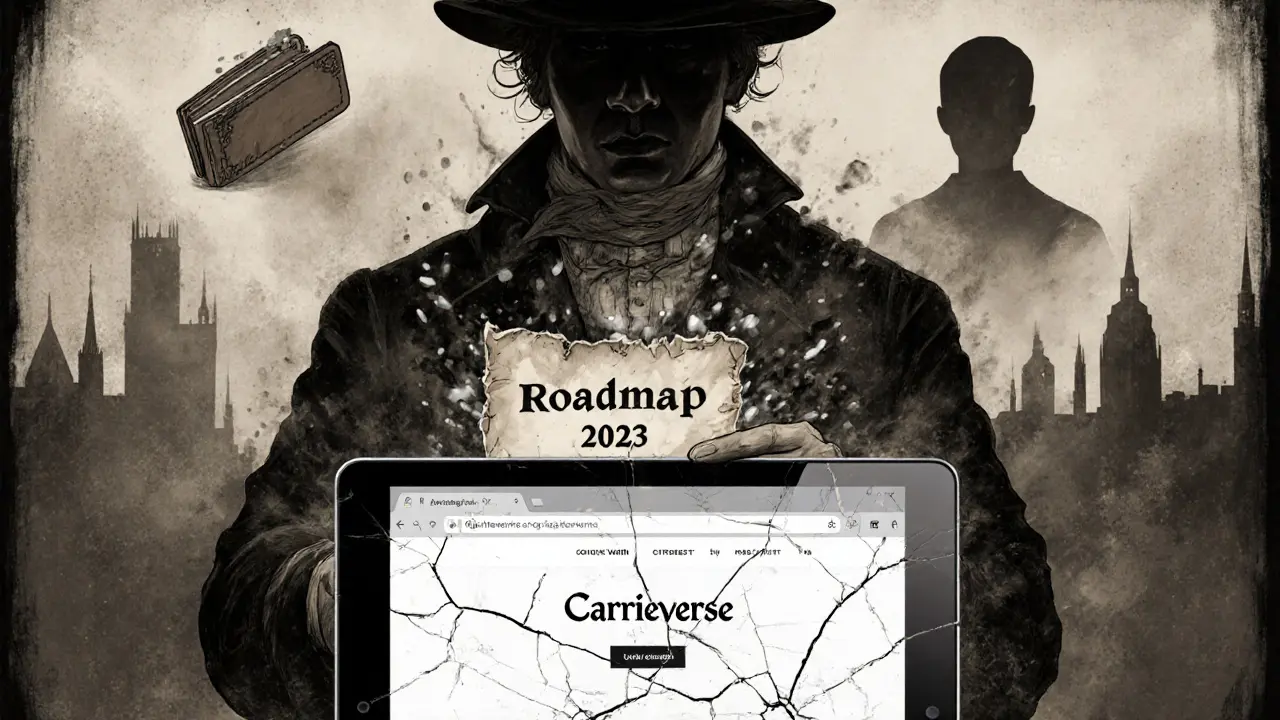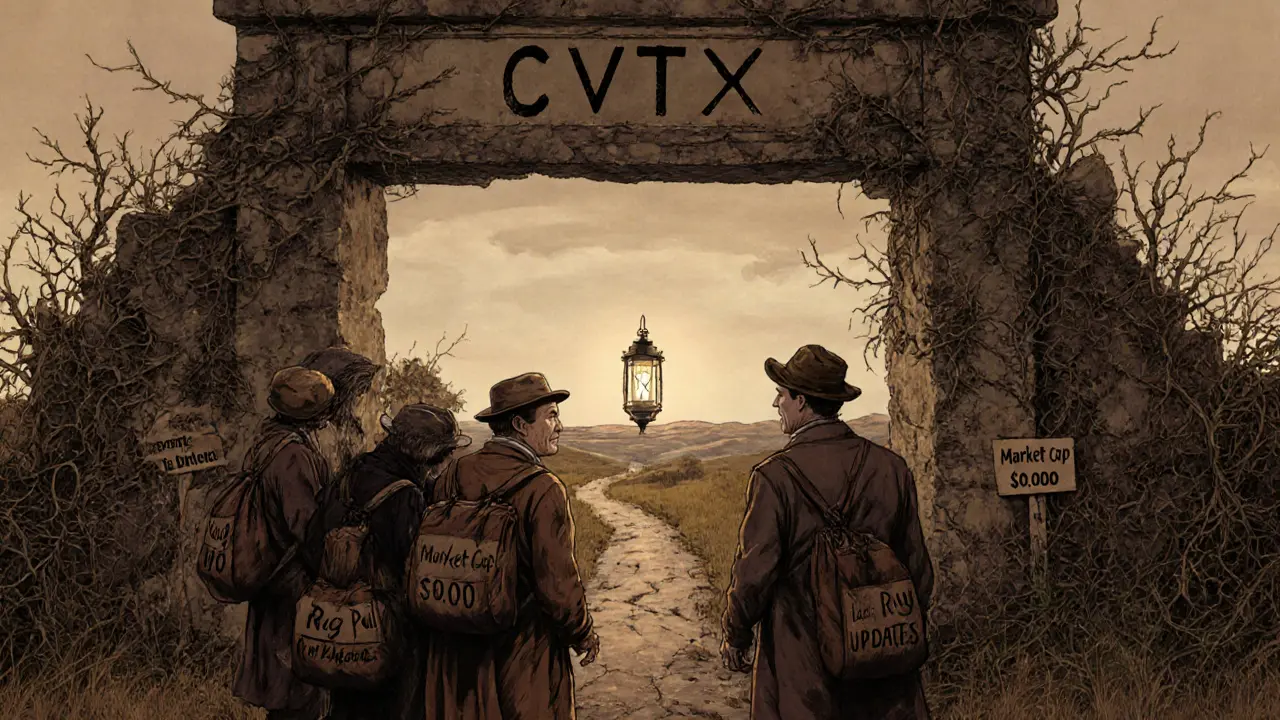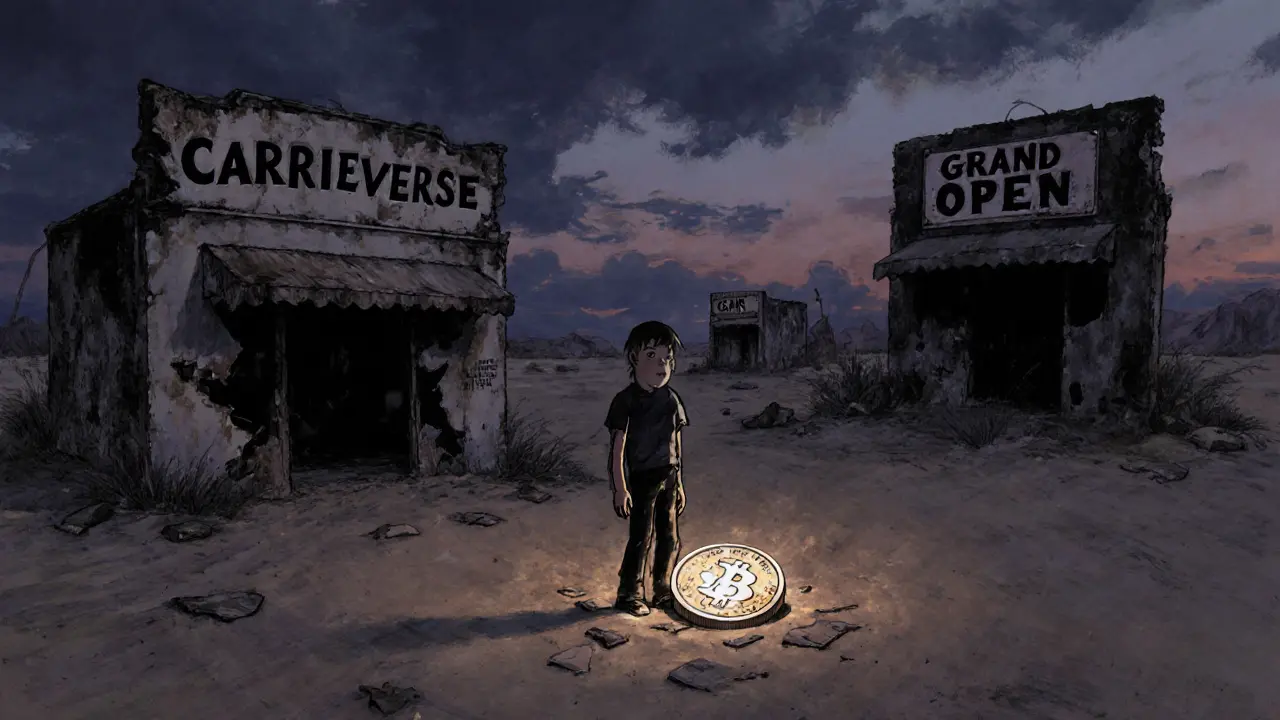CVTX Token Value Calculator
Calculate your CVTX investment value based on historical price data from the article. See how much your tokens are worth today compared to their peak value.
Carrieverse (CVTX) was supposed to be the next big thing in social metaverses - a place where you could log your life, build your digital self, and earn crypto just by living. But today, it’s a ghost town. The website barely loads. The app never arrived. The team went silent. And the token, CVTX, has lost 99.98% of its value since its peak. This isn’t a story about potential. It’s about what happens when a crypto project raises money, makes big promises, and then disappears.
What Carrieverse claimed to be
Carrieverse pitched itself as a life-logging metaverse built on Polygon. The idea was simple: your avatar follows you through real life, captures moments, and turns them into digital assets you own. You could buy virtual land, design your own spaces, and trade them using CVTX - the project’s native token. It targeted Gen Z and millennials tired of centralized social media, promising full control over your data and digital identity. The official site, carrieverse.com, still exists - but it’s just a static landing page. No login. No avatar creator. No virtual world. Just a few blurry images and vague promises about ‘future updates.’ The roadmap from 2023 listed big milestones: the Cling Wallet for iOS and Android, the ‘CarrieVerse Grand OPEN,’ and a game called ‘SuperKola Tactics.’ None of these ever launched. Not even close.The token: CVTX on paper vs. reality
CVTX is an ERC-20 token running on the Polygon blockchain. It had a fixed supply of 1 billion tokens. In January 2023, the project ran an IEO on MEXC and raised $120,000 at $0.07 per token. At first glance, that seemed modest. But here’s the catch: only 1.71 million tokens - just 0.17% of the total supply - were sold to the public. The rest? Reserved for the team, investors, and ‘ecosystem development.’ That’s a red flag. When a project keeps over 99% of its tokens for insiders, it’s a setup for a dump. And that’s exactly what happened. CVTX hit an all-time high of $0.2202 in February 2024. Within months, it collapsed. As of November 2025, CVTX trades around $0.0000425. That’s a 99.98% drop. Today, the market cap is around $9,000. The 24-hour trading volume? Just $5,000. That’s less than what some meme coins make in five minutes. You can only trade CVTX on two exchanges: MEXC and Bitrue. And even there, liquidity is so thin that slippage hits 10-15% on small trades. If you bought CVTX during the hype, you’re stuck. Selling means taking a massive loss. Buying now? You’re gambling on a dead project.Why it failed: No product, no team, no trust
Carrieverse didn’t fail because the tech was bad. It failed because there was never a product to begin with. - The promised metaverse? Just a website with a ‘Coming Soon’ banner. No interactive elements. No avatars. No land to buy. - The Cling Wallet? Never released. Not even a beta. - The team? Vanished. Last official update on their Telegram was February 2024. The channel has shrunk from 3,500 members to under 1,250. No one answers questions. - Community feedback? Overwhelmingly negative. Reddit threads from r/CryptoCurrency and r/CryptoMoonShots are full of users calling it a ‘rug pull’ and ‘abandoned.’ One user wrote: ‘Wasted $500. Website barely loads. Promised metaverse never materialized.’ Even the initial hype was built on borrowed momentum. Carrieverse leaned hard on its partnership with Polygon Studios - but Polygon has hundreds of projects. This one got zero attention from them after the initial announcement. No press releases. No developer grants. No updates. Just silence.
How it compares to real metaverse projects
Compare Carrieverse to The Sandbox (SAND) or Decentraland (MANA). Both have active user bases, regular updates, developer tools, and real events. SAND has a market cap of over $1 billion. MANA sits at $700 million. Carrieverse? $9,000. That’s not a difference in scale - it’s a difference in legitimacy. Other projects like Render Network (RNDR) and MetaWorld (MTX) also have real use cases, active communities, and measurable growth. Carrieverse had none of that. It didn’t even have a working prototype. It was a pitch deck with a token attached.What you need to know if you own CVTX
If you still hold CVTX, here’s the hard truth:- You can’t use it for anything. There’s no platform to spend it on.
- You can’t sell it easily. Low liquidity means you’ll take a big hit on every trade.
- You can’t get help. Support emails go unanswered. No one responds on Discord or Telegram.
- There’s no roadmap left to follow. The project is dead.

What Carrieverse teaches us about crypto
Carrieverse isn’t an outlier. It’s a textbook case of how crypto projects die. They raise money on hype. They promise innovation. They delay everything. Then they vanish. The lesson? Don’t invest in concepts. Invest in execution. Look for:- Active GitHub commits
- Regular team updates on Twitter or Discord
- Real users talking about using the product
- Token distribution that doesn’t favor insiders
Is Carrieverse worth investing in now?
No. Not even close. The token has no utility. No development. No community. No future. The price might tick up slightly - maybe to $0.0001 by 2026, as some prediction sites guess - but that’s not a recovery. It’s just noise. There’s no demand. No buyers. No reason for the price to rise. If you’re looking to get into metaverse crypto, look at projects that are shipping code, not just marketing slides. Carrieverse is a graveyard. Don’t bury your money there.Is Carrieverse (CVTX) still active?
No. Carrieverse has been effectively abandoned since early 2024. The team stopped posting updates, the promised metaverse platform was never built, and the official website remains a static landing page with no interactive features. Community channels like Telegram and Discord are inactive, and no development work has been observed on public repositories.
Can I still trade CVTX tokens?
Yes, but with extreme difficulty. CVTX is listed on only two exchanges: MEXC and Bitrue. Trading volume is extremely low - around $5,000 per day - meaning there are very few buyers. Selling your tokens often results in 10-15% slippage, and large sales may not go through at all. Liquidity is near zero.
What happened to the Carrieverse metaverse?
It never existed. Despite promises of a fully functional metaverse with avatars, virtual land, and games like ‘SuperKola Tactics,’ no platform was ever launched. The website still shows marketing images and vague descriptions, but there are no interactive elements, no login system, and no way to create or own digital assets. The project’s roadmap milestones were missed without explanation.
Why did CVTX lose so much value?
CVTX lost value because the project failed to deliver on its promises. After reaching an all-time high of $0.2202 in February 2024, the team went silent, no product was released, and investors lost confidence. With no utility, no users, and no development, the token became worthless. The market responded by selling off, causing a 99.98% price drop.
Was Carrieverse a scam?
It’s not officially labeled a scam, but it fits the pattern of an abandoned project with a rug-pull structure. The team raised $120,000 in an IEO, kept over 99% of tokens for themselves, and never delivered a working product. With no communication, no updates, and no user base, most analysts and community members consider it a failed venture with little to no chance of recovery.
